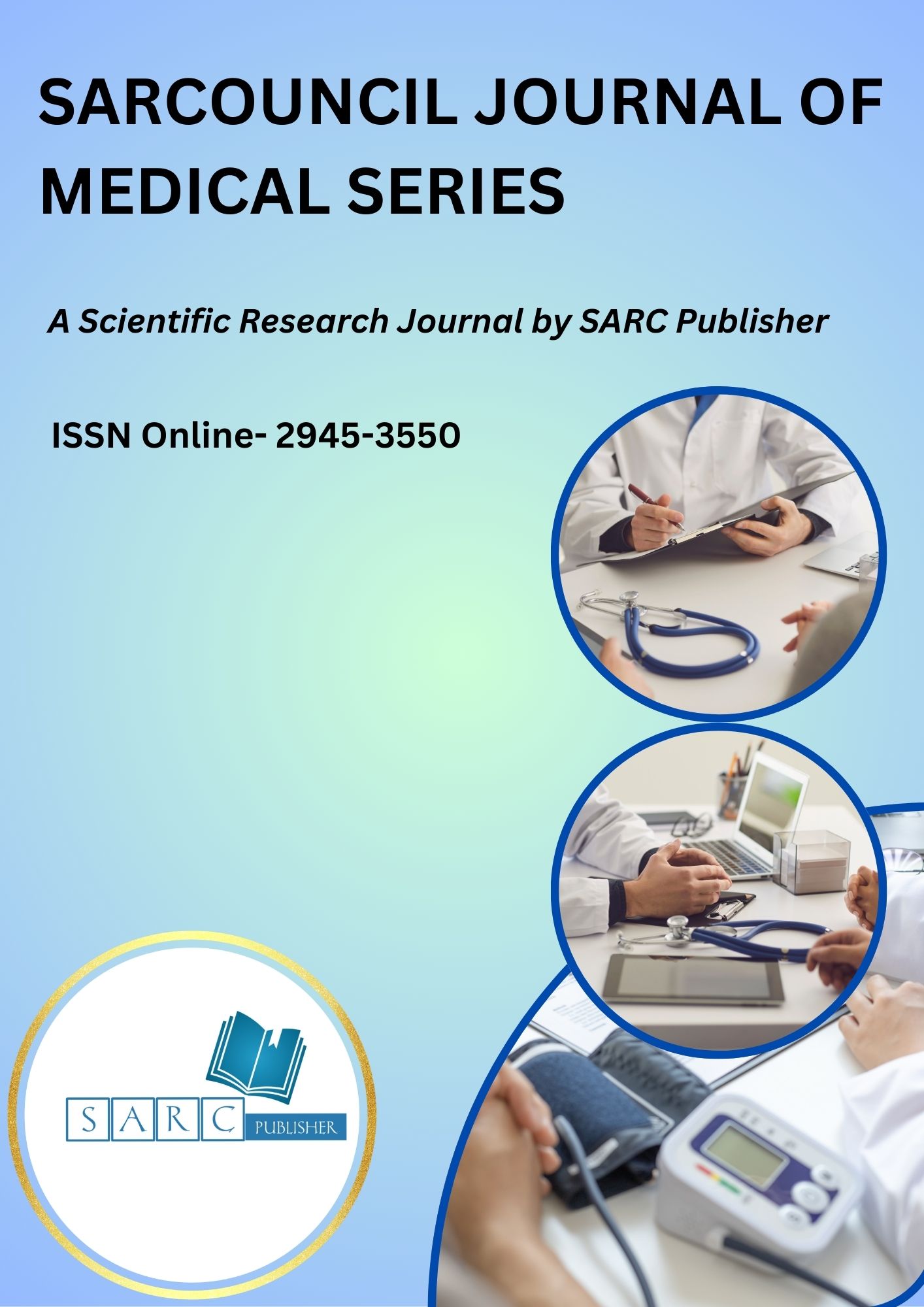Sarcouncil Journal of Medical Series

Sarcouncil Journal of Medical Series
An Open access peer reviewed international Journal
Publication Frequency- Monthly
Publisher Name-SARC Publisher
ISSN Online- 2945-3550
Country of origin- PHILIPPINES
Impact Factor- 3.7
Language- English
Keywords
- Pathology, Radiology, Serology, Surgery, Biochemistry, Biophysics, Cytology, Embryology, Endocrinology, Epidemiology, Genetics, Histology
Editors

Dr Hazim Abdul-Rahman
Associate Editor
Sarcouncil Journal of Applied Sciences

Entessar Al Jbawi
Associate Editor
Sarcouncil Journal of Multidisciplinary

Rishabh Rajesh Shanbhag
Associate Editor
Sarcouncil Journal of Engineering and Computer Sciences

Dr Md. Rezowan ur Rahman
Associate Editor
Sarcouncil Journal of Biomedical Sciences

Dr Ifeoma Christy
Associate Editor
Sarcouncil Journal of Entrepreneurship And Business Management
Before Blaming the SARS-Cov-2 Vaccination/Infection for Autoimmune Encephalitis, Alternative Causes Must Be Ruled Out
Keywords: autoimmune encephalitis, SARS-CoV-2 infection, vaccination, focal seizure, pleocytosis.
Abstract: We read with interest Peraita-Adrados et al.,’s article about a 23-year-old male with narcolepsy who was diagnosed with autoimmune immune encephalitis (AIE) seven weeks after the first dose of a SARS-CoV-2 vaccination (SC2V) with the mRNA-1273 vaccine, and three weeks after a SARS-CoV-2 infection (SC2I) diagnosed using an antigen-test [Peraita-Adrados, R. et al., 2024]. The patient benefited from glucocorticoids and plasmapheresis [Peraita-Adrados, R. et al., 2024]. After excluding alternative causes, AIE was attributed to the SC2I or SC2V [Peraita-Adrados, R. et al., 2024]. The study is excellent, but some points need discussion. The first point is that no magnetic resonance imaging (MRI) modalities other than diffusion-weighted imaging (DWI) have been reported or presented [Peraita-Adrados, R. et al., 2024]. To assess whether the DWI lesions shown in figure 1 represent cytotoxic or vasogenic oedema, it is imperative to at least know the results of the apparent diffusion coefficient (ADC) maps. Were ADC maps hypo-, hyper- or iso-intense? Cytotoxic oedema is characterised by hyperintense DWI and hypointense ADC, while vasogenic oedema is characterised by both hyperintense DWI and ADC. Distinguishing between the two is crucial to assess whether the lesions presented represent an ischemic stroke or not. A second point is that the cardiovascular risk profile has not been discussed in detail [Peraita-Adrados, R. et al., 2024]. We should know whether the patient had diabetes, arterial hypertension, hyperlipidemia, atrial fibrillation, or smoked. Since patients with narcolepsy are at increased risk of cardiovascular events [Ben-Joseph, R. H. et al., 2023; Mayer-Suess, L. et al., 2023], it is particularly important to rule out that the lesions shown in figure 1 represent narcolepsy-associated cardio-embolic strokes. Another risk factor for ischemic stroke that has not been discussed in detail is cannabis use. We should know in what form the patient consumed cannabis. If he consumed it as joints, we should know how many he smoked per day. Cannabis is known to increase the risk of ischemic stroke [Mondal, A. et al., 2024]. A third point is that the results of the cardiologic examination were not reported [Peraita-Adrados, R. et al., 2024]. We also should know the results of echocardiography, 24h-Holter ECG and 24h-blood pressure monitoring. A fourth point is that the diagnosis of AIE has not been well supported [Peraita-Adrados, R. et al., 2024]. Arguments against AIE are that there was no enhancement on cerebral MRI and that antibodies associated with AIE were negative. As for AIE antibodies, we should know which ones have been determined and whether in serum or CSF. Arguments against SC2V as a trigger of AIE are that it was administered seven weeks previously and that there were no complications immediately after SC2V. A strong argument against SC2I as a cause of AIE is that the infection was only confirmed by an antigen test but not by RT-PCR. Since antigen tests have lower sensitivity and specificity compared to RT-PCR, it cannot be ruled out that the reported test result was false positive. We should also know the exact number of CSF leucocytes. The fifth point is the discrepancy between the symptoms presented by the patient upon arrival in the emergency department (tremor, dysarthria, behavioural changes, autonomic dysfunctions, lethargy) and the clinical neurologic examination described as normal in the abstract [Peraita-Adrados, R. et al., 2024]. This discrepancy should be resolved. What was the delay between admission to the department and the neurological examination? The sixth point is that the DWI hyperintensities of the right frontal and temporal cortex were not considered as an epiphenomenon of the focal seizures that manifested as cloni of the right limb. The seventh point is the statement in the abstract “CSF bacterial and fungal cultures for viral infections were negative” [Peraita-Adrados, R. et al., 2024]. Viruses are not detected in CSF through bacterial or fungal cultures, but rather through PCR or complement binding reactions. In summary, the excellent study has limitations that should be addressed before final conclusions are drawn. Clarifying the weaknesses would strengthen the conclusions and improve the study. Before diagnosing SC2V- or SC2I-associated AIE in a patient with narcolepsy, several differential diagnoses must be thoroughly ruled out.
Author
- Josef Finsterer
- MD; PhD; Neurology & Neurophysiology Center; Vienna; Austria.

